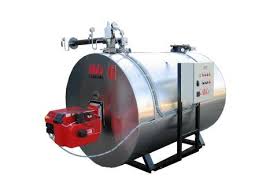
نوفمبر . 02, 2024 20:04 Back to list
boiler temperature setting for hot water
Understanding Boiler Temperature Settings for Hot Water
Boilers play a crucial role in heating systems, providing hot water for residential and commercial use. One of the most important aspects of boiler operation is the temperature setting, which directly affects efficiency, comfort, and safety. Understanding how to properly set your boiler's temperature for hot water can lead to significant benefits in energy consumption and overall functionality.
The primary purpose of a boiler is to heat water. Generally, the recommended temperature setting for producing hot water ranges between 140°F and 160°F (60°C to 71°C). This temperature range is ideal for most household uses including bathing, cleaning, and cooking. Setting the temperature too low can lead to insufficient heating and discomfort, while setting it too high poses risks of scalding and increases energy consumption.
One critical consideration when determining the appropriate temperature setting is safety. Water at temperatures above 150°F (65°C) can cause burns within seconds. It is especially vital in homes with children or elderly individuals, where the risk of scalding is heightened. Many experts recommend setting the water temperature at or below 140°F (60°C) to minimize these risks while still ensuring adequate hot water supply.
boiler temperature setting for hot water

Another factor to consider is energy efficiency. Higher water temperatures result in increased energy consumption, which can significantly affect utility bills. By maintaining a lower temperature, homeowners can optimize energy use and potentially save money. Installing a thermostat or timer on your boiler can also help regulate temperature and ensure that hot water is available when needed without running continuously.
In addition to safety and energy efficiency, the temperature setting can also influence the longevity of your boiler. Operating at excessively high temperatures can put undue stress on the system, leading to wear and tear over time. Regular maintenance and monitoring of temperature settings can help extend the lifespan of your boiler, ultimately resulting in reduced replacement costs.
It's also worth noting that certain appliances may require specific temperature settings. For example, dishwashers often function best with water temperatures exceeding 140°F to ensure proper sanitation. In such cases, a compromise must be reached, either by adjusting the boiler temperature or by using an auxiliary water heater for specific tasks.
In summary, setting the boiler temperature for hot water requires balancing safety, comfort, efficiency, and appliance needs. A setting between 140°F and 160°F is generally recommended, with careful consideration for specific household situations. Regularly reviewing and adjusting the temperature as necessary can result in a more efficient heating system, improved safety, and lower energy costs, making it an essential aspect of effective home management. Proper maintenance and awareness ensure that your boiler serves you well for years to come.
-
Oil Fired Hot Water Boilers Sale - High Efficiency & Affordable
NewsJul.31,2025
-
High-Efficiency Commercial Oil Fired Steam Boiler for Industry
NewsJul.30,2025
-
High-Efficiency Biomass Fired Thermal Oil Boiler Solutions
NewsJul.30,2025
-
High Efficiency Gas Fired Thermal Oil Boiler for Industrial Heating
NewsJul.29,2025
-
High-Efficiency Gas Fired Hot Water Boiler for Sale – Reliable & Affordable
NewsJul.29,2025
-
High Efficiency Biomass Fired Hot Water Boiler for Industrial and Commercial Use
NewsJul.29,2025
Related PRODUCTS






















